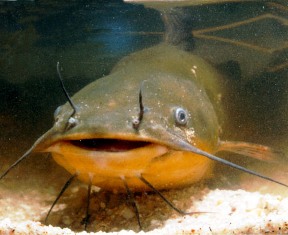Killer catfish exist and in large numbers
 Washington, Dec 11 : Think that only snakes, scorpions, bees, wasps or even frogs can be venomous? Well, then here’s a surprise—even catfish is a part of the poisonous list, says a new study.
Washington, Dec 11 : Think that only snakes, scorpions, bees, wasps or even frogs can be venomous? Well, then here’s a surprise—even catfish is a part of the poisonous list, says a new study.
Conducted by University of Michigan graduate student Jeremy Wright, the study found that at least 1,250 and possibly more than 1,600 species of catfish might be venomous—far more than previously believed.
However, there is not much to be afraid of any attacks of killer catfish, because at least in North America, these finned fatales use their venom mainly to defend themselves against predatory fish.
But they can inflict a painful sting that many fishermen have suffered.
In other parts of the world, some catfish do have extremely toxic venoms that can be deadly to humans.
Wright used histological and toxicological techniques, as well as previous studies of evolutionary relationships among catfish species, to catalog the presence of venom glands and investigate their biological effects.
Catfish venom glands are found alongside sharp, bony spines on the edges of the dorsal and pectoral fins, and these spines can be locked into place when the catfish is threatened.
When a spine jabs a potential predator, the membrane surrounding the venom gland cells is torn, releasing venom into the wound.
In the study, Wright described how catfish venoms poison nerves and break down red blood cells, producing such effects as severe pain, reduced blood flow, muscle spasms and respiratory distress.
However, because none of the species he examined produces more than three distinct toxins in its venom, each species probably displays only a subset of the whole repertoire of effects.
Wright said that the main dangers to humans who tangle with North American catfish come not from the initial sting and inflammation, but from secondary bacterial and fungal infections that can be introduced through the puncture wound or when pieces of the spine and other tissue break off in the wound.
"In such cases, complications associated with these infections and foreign bodies can last several months,” he added.
On the evolutionary side, Wright''s analyses point to at least two independent origins of catfish venom glands.
In addition, the toxic proteins show strong similarities with, and might be derived from, previously characterized toxins found in catfish skin secretions.
The study has been published in the open access journal BMC Evolutionary Biology. (ANI)